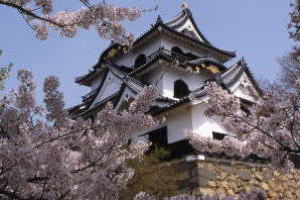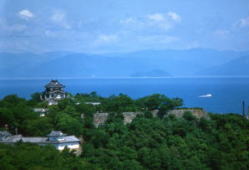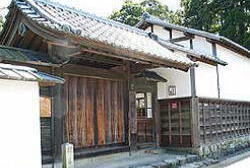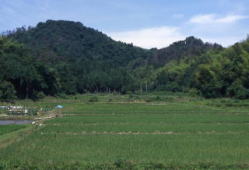TOP > Welcome to Rekishikaido > Hikone
Thema Area Hikone
 Endowed with a wondrous natural environment in Lake Biwa and the Suzuka Mountain Range, Hikone has been heavily tinged with history and culture from its day as a castle town of the Edo Period to the present day.
Endowed with a wondrous natural environment in Lake Biwa and the Suzuka Mountain Range, Hikone has been heavily tinged with history and culture from its day as a castle town of the Edo Period to the present day.
Towering over the city is Hikone-jo Castle known as one of the 8 scenic sites on Lake Biwa because of its beauty in the moonlight.
The area around the castle is a mixture of old and new elements such as the Yumekyobashi Castle Road that leads to the castle entrance and 4-Bancho Square that brings to life the romance of the Taisho Era.
Point
We recommend Hikone Castle (National Treasure) first. Its castle town remains in the name of the town such as Konya-cho, Uoya-cho, Aburaya-cho. Then you can enjoy shopping and dinner at Yumekyobashi Castle Road.

|
Hikone-jo Castle
Known as one of the 8 scenic sites on Lake Biwa because of its beauty in the moonlight and built with 350,000 stones, Hikone-jo Castle was the home of the Ii Clan who ruled over Hikone. The 3-story 3-roof keep, the Sawaguchimon-yagura Turret and Tenbin-yagura Turret still look as they did in the day. On the grounds is found the Hikone Castle Museum, which has its own Noh stage and teahouse.
How to get there: Approx. 10 min on foot from Hikone Station of the JR Biwako Line
Open: 8:30am - 5:00pm
Admission fee: 600yen (Castle and Genkyu-en Garden)
Closed: Open year-round
Hikone Castle Museum
The museum was built to resemble the administrative offices that served the castle. It has more than 65,000 artworks, literary works and other artifacts associated with the Ii Clan who were lords of the castle, and selectively puts them on display.
Open: 8:30 - 17:00 (Doors closed at 16:30)
Admission fee: 500yen
Closed: During exhibit preparation (Mid July)

|
Umoreginoya
This is the residence where the Steward Naosuke Ii lived from when he was 17 until becoming the castle lord at the age of 32. Earning a stipend of just 300 bails during these years, it was said that he spent everyday as if forgotten, which is the analogy of the term umoregi, literally meaning "trees that were buried and left to Mother Nature to carburize into lignite". (The inside is not open for viewing.)
Admission fee: 500yen
Closed: Mondays, winter

|
Mt. Sawa
This not so high mountain is where once stood the castle of the Lord/General Mitsunari Ishida who was defeated at the Battle of Sekigahara. Little remains today of anything suggestive of its grandeur, not even the stonewalls, nevertheless the view from the summit of Hikone-jo Castle and the city below is magnificent. Mt. Sawa is the guardian saint of Seiryu-ji Temple and Ryotan-ji Temple. If you climb the mountain in a group, try calling out the two temples in chorus.










